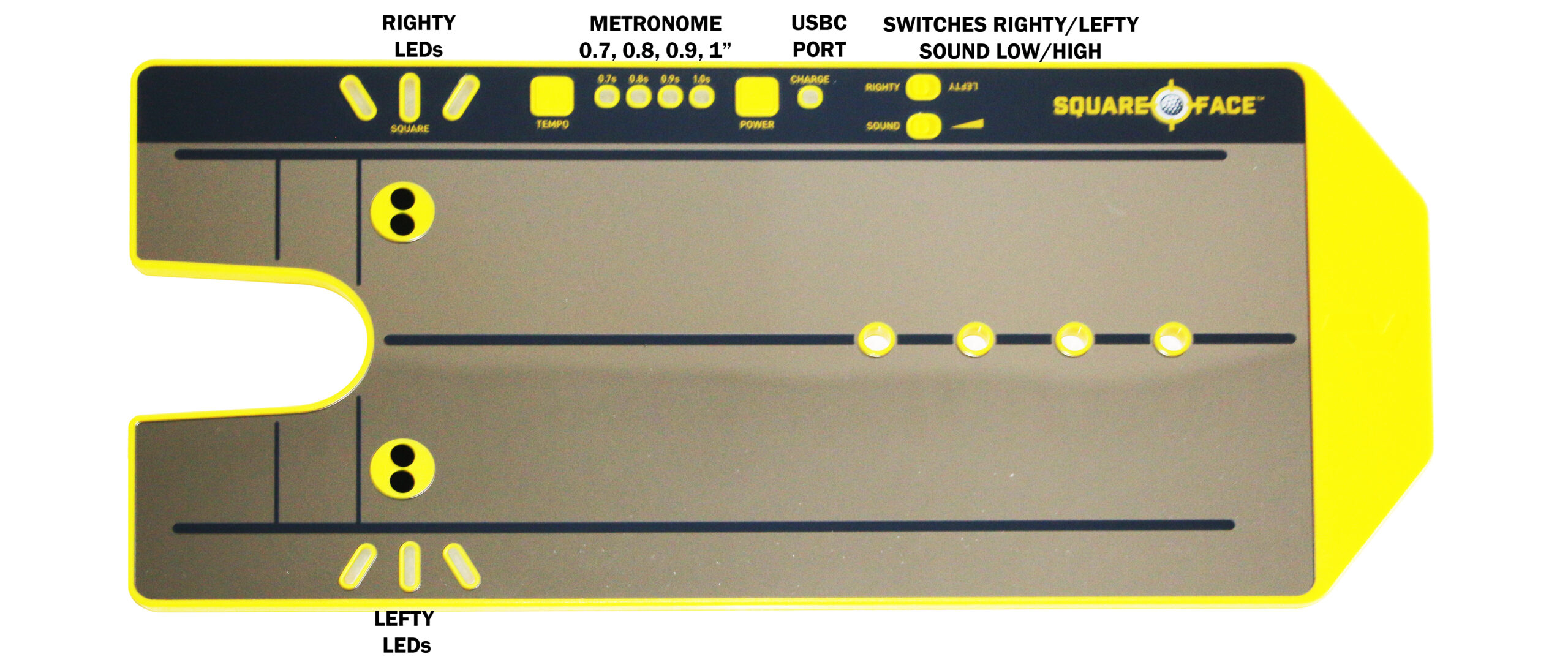5 Putting Strategies for every course
Putting Strategies: The delicate dance between man and machine, the sweet satisfaction of seeing that white sphere disappear into the cup. But let’s be honest, putting can also be a frustrating game, especially when you encounter the quirks and challenges of different green types. This guide equips you with the knowledge to navigate any putting surface with confidence, from the windswept links to the lightning-fast greens and even those devilish slopes.
Taming the Tempestuous Links
Links courses are a breed of their own. Firm, fast greens and unpredictable coastal breezes demand a different approach. Forget about those high-arcing, elevator putts. Here, it’s all about the bump and run. This low-trajectory approach lets the natural contours of the green guide the ball, minimizing airtime and keeping it out of the clutches of the ever-present wind.
Speaking of wind, it can wreak havoc on your carefully planned lines. Learn to read the green with the wind in mind. Play “with the wind” for downwind putts, allowing for a softer landing. Putting “against the wind” for uphill climbs requires a bit more mustard behind the putt.
Not all lies on links courses are created equal. Uneven terrain and tricky slopes are par for the course. Remember, it’s better to walk away with a satisfying two-putt than to chase a risky birdie that could end in a three- or even worse. Be strategic about which birdie putts to go for, and prioritize making pars on these demanding layouts.
The key to success on links greens lies in mastering the ground game. Forget about fancy launch angles – here, it’s all about feel. Pay close attention to the subtle slopes and contours that will influence the ball’s roll. A keen eye for these nuances will help you adjust your aim accordingly and find the path to the hole.
Putting Prowess on Tough Greens
Sloping greens add another layer of complexity. Don’t just stand behind your ball and guess. Take the time to walk around the green and get a good read from different angles. This will help you identify the overall slope and make the necessary adjustments to your aim for a successful putt.
Multi-tiered greens require a focus on distance control. Whenever possible, try to leave yourself above the hole. Putting downhill on these greens can be a recipe for disaster, with balls rocketing past the cup like runaway rockets. Opt for uphill putts whenever you can, allowing for more controlled rolls.
Contoured greens with ridges and valleys demand a different strategy. Aim to putt from a lower position than the hole whenever possible. This reduces the risk of a tricky downhill putt and gives the ball a better chance of rolling smoothly into the cup.
Super-fast greens, often measured on the stimp meter, require a delicate touch. Shorten your backswing and focus on a smooth, controlled stroke. This finesse will help you tame these lightning-fast surfaces and avoid the dreaded “blown putt” that sails past the hole.
Adapting Your Game for Different Courses
Not all greens are created equal. Here’s a quick rundown on how to adjust your putting game for various course types:
- Parkland Precision: Parkland courses, with their manicured greens, favor accuracy over power. Here, a solid putting stroke and the ability to read subtle breaks are key.
- Mountain Magic: Elevation changes come into play on mountain courses. Uphill putts require a bit more oomph, while downhill putts necessitate a softer touch. Learn to feel how to adjust your stroke for these elevation changes.
- Coastal Challenges: Coastal winds can significantly impact your putts. Before stroking the ball, get a sense of the wind direction and how it might affect the roll. Adjust your read accordingly to avoid seeing your putt veer off course.
- Desert Dynamics: Desert courses often have firm greens with some sand mixed in. This can result in inconsistent lies, so focus on maintaining a stable putting posture for a clean strike. You might also need to adjust your read slightly for these sandy greens, as the sand can slow the ball down a touch.
Putting Through the Elements: Rain or Shine
Great putting isn’t just about skill; it’s about adapting to the course and the weather. Here are some tips for conquering the greens in different conditions:
- Rainy Day Putting: When the heavens open up, greens soften up, and balls don’t roll as far. Expect your putts to take a different path than usual. Adjust your power based on the wetness of the green and be prepared to give your putts a little more juice to get them to the hole.
- Hot and Dry Greens: Sunshine and dry weather can turn greens into putting deserts. The greens will be firmer and faster, so you might need to shorten your backswing a bit to avoid blasting the ball past the hole. Focus on a smooth, controlled stroke to get the right distance.
- Early Morning & Twilight Rounds: Sunrise and sunset rounds offer a magical atmosphere, but the greens can be tricky with dew on the ground or shifting shadows. Morning dew can slow the putting surface down, so be careful not to overpower your putts. As the day progresses, shadows can make slopes look more severe than they are. Take a few extra practice putts to get a feel for the green’s speed and any unusual breaks caused by the shadows.
- Tournament Putting: Multi-day tournaments mean course conditions can evolve throughout the competition. The greens might get worn down as more golfers play them, or the weather might change. Stay alert to these changes and adjust your putting strategy accordingly.
Keeping Your Putting Game Sharp
Great putting is a product of consistent practice and continuous learning. Here are some ways to stay sharp on the green:
- Learn from Every Round: After each round, take time to analyze your putts. What worked well? What areas need improvement? Consider the course type, the conditions you played in, and your overall putting strategy. By reflecting on your game, you can identify areas for improvement.
- Know Before You Go: Playing a new course? Don’t go in blind! Read online reviews, talk to golfers who have played there before, and get a sense of the greens. Having a basic understanding of the course’s quirks will help you formulate a putting strategy before you even tee off.
- Practice Makes Progress: Don’t just focus on the driving range – incorporate putting drills for various situations into your practice routine! Set up drills to simulate links courses, fast greens, and uphill putts. The more you practice putting in various conditions, the more comfortable you’ll be when you face them on the course.
- Pick the Brains of Putting Pros: Talk to experienced golfers who have played a variety of courses. They’ll be a treasure trove of putting wisdom. Ask them about their strategies for different course types and see if you can glean new tips to add to your putting arsenal.
Closing Thoughts: Conquering Any Green
Being a putting master requires a diverse set of skills. By learning how to putt on links courses, navigate tricky greens, and adapt to different weather conditions, you’ll be equipped to sink more putts no matter what the course throws your way. Embrace the challenge, keep learning, and relish the satisfaction of conquering every green you encounter.


The Square Face And Putt Like A Pro Book
Click here for 10% off the Square Face (use coupon code SUPERIORGOLF) and my eBook free with the purchase of the Square Face
